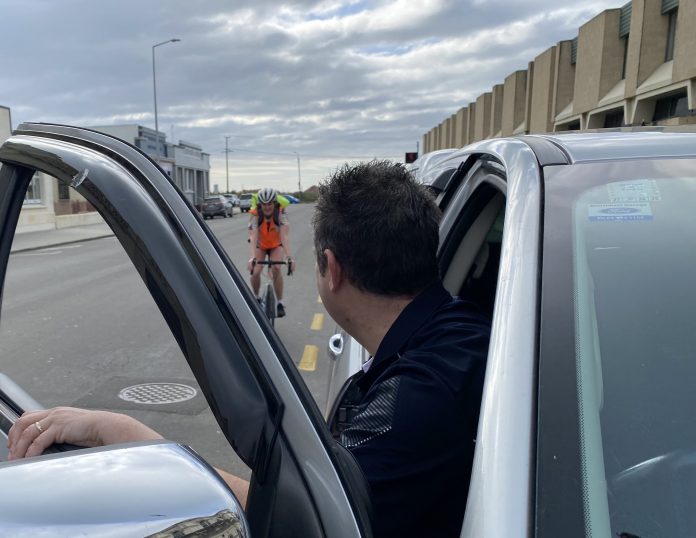
Today, I’m writing about a practical measure that with a little thought and a little practice may just save someone being hurt or a crash happening. This simple measure is known worldwide as the Dutch Reach.
What is a Dutch Reach? It is a technique that originated in the Netherlands and is now being taught across the world, to reduce the number of crashes involving people opening vehicle doors into cyclists, pedestrians, or other vehicles.
The Dutch Reach is a practice for drivers and passengers where, rather than using your hand closest to the door to open it, you use your far hand.
This choice sets off a series of five linked actions: reach, swivel, look back, open slowly, and then exit facing traffic.
Taking them step by step:
To trigger the start of the natural movement, simply reach across your chest with your hand nearest the middle of the car to open the door. Most cars in New Zealand are right-hand drive, so this means your left hand.
By reaching across yourself you are forcing your upper torso to swivel.
This enables you to look back (if you are in the front) in the rear-view mirror, side mirror, out of the window, and then look over your shoulder to see any oncoming traffic.
If you are in the rear, you may not be able to see the mirrors, but can still use the principal and look out the window and over your shoulder.
Once you know it is clear, you can then look back through the window and begin to open slowly the door, which allows a continuous view of oncoming traffic while you are preparing to exit.
Continue with the natural body motion you have created, by using your far hand, and you will find yourself exiting the vehicle facing the traffic, allowing you to make sure you are not stepping out in front of another road user.
This practice can help to avoid collisions, often referred to as ‘‘doorings’’ or ‘‘ being doored’’, which is when a driver or passenger opens a vehicle door into the path of oncoming traffic, resulting in a crash oravoidance manoeuvres, such as swerving or braking, which then may result in a crash.
The Dutch Reach method can also protect drivers and passengers themselves from being struck by an oncoming vehicle, as well as reducing the risk of their car door being damaged or torn off by a passing vehicle.
A simple method that, although it feels strange to start with, becomes easier and then second nature as you practise and use it more.
Just remember, you have an opportunity every time you exit a car to practise, be it from the front or the back seat.
Honestly, it’s not that hard and might save you a repair bill or someone being seriously injured.
Go on, go sit in your car and try it out.



